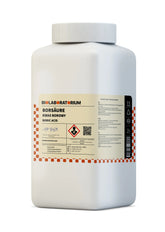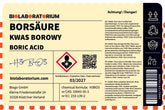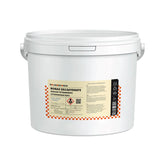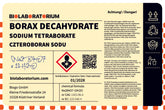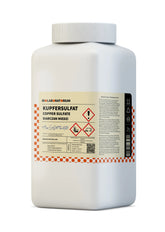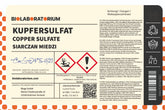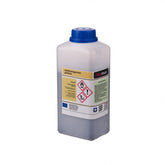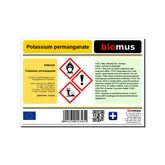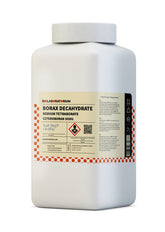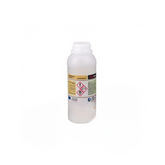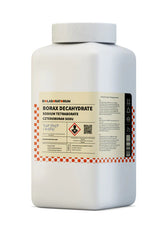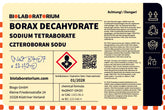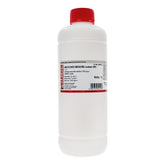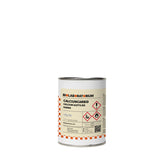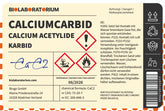L-tartaric acid in the laboratory – properties and occupational safety
In the world of chemistry, L-tartaric acid, also known as tartaric acid or Acidum tartaricum, is a versatile and useful molecule. As one of the most important organic acids, it is used in numerous applications – from the food industry to industrial processes. In this blog post, we want to take a closer look at the properties and peculiarities of L-tartaric acid to develop a deeper understanding of this valuable chemical building block.
Chemical structure and properties of L-tartaric acid
L-tartaric acid, with the chemical formula C₄H₆O₆, is a divalent carboxylic acid that contains two carboxyl groups (-COOH) and two hydroxyl groups (-OH) in its structure. This arrangement gives the acid its characteristic properties and reactivities.
One of the most striking properties of L-tartaric acid is its ability to form complexes with metal ions. This behavior makes it a valuable complexing agent in various applications, such as water treatment or metal cleaning.
Furthermore, L-tartaric acid is well soluble in water and has an acidic taste. Its pKa values of 3.04 and 4.37 indicate that it is a moderately strong acid that partially dissociates in aqueous solutions.
Occurrence and extraction of L-tartaric acid
L-tartaric acid naturally occurs in grapes, tamarinds, and other fruits. Traditionally, it was obtained through fermentation and crystallization from cream of tartar, a byproduct of winemaking.
Nowadays, however, L-tartaric acid is mainly produced through chemical synthesis. Maleic anhydride, derived from petroleum or natural gas, is reacted with water and carbon dioxide. This process enables efficient and cost-effective production of the acid in large quantities.
Applications of L-Tartaric Acid
The versatile properties of L-tartaric acid make it a valuable component in numerous products and processes:
Food industry
In the food industry, L-tartaric acid is used as an acidulant, preservative, and flavor enhancer. It is used, for example, in beverages, baked goods, confectionery, and canned foods.
Pharmaceutical industry
In the pharmaceutical industry, L-tartaric acid serves as an excipient in medications to regulate pH or act as a complexing agent.
Chemical Industry
In the chemical industry, L-tartaric acid is used as a starting material for the production of dyes, varnishes, adhesives, and other specialty chemicals.
Textile finishing
In textile finishing, L-tartaric acid is used as a mordant to prepare fibers for dyeing.
Electroplating
In electroplating, L-tartaric acid serves as a complexing agent to keep metal ions in solution, enabling the coating of surfaces.
Water treatment
In water treatment, L-tartaric acid is used as a complexing agent to bind metal ions and thus improve water quality.
Occupational Safety and Storage of L-Tartaric Acid
As with all chemical substances, it is important to observe the appropriate safety measures when handling L-tartaric acid. Although L-tartaric acid is not highly toxic, it can cause irritation upon skin or eye contact.
When handling L-tartaric acid, appropriate protective equipment such as gloves, safety goggles, and lab coats should be worn. Good ventilation of the work area is also important.
When storing L-tartaric acid, it should be kept in a cool, dry, and well-ventilated place. Direct contact with metals should be avoided, as L-tartaric acid can cause corrosion. Additionally, tartaric acid is classified as flammable, so open flames or sparks nearby should be avoided.
By adhering to these safety measures, handling L-tartaric acid in the laboratory or industry can be made safe and efficient.
Conclusion
L-tartaric acid is a versatile and useful molecule that is used in numerous fields of application. From the food industry to the chemical and textile industries, the unique properties of this organic acid are beneficial.
Through a deeper understanding of its chemical structure, production, and applications, we can optimally use L-tartaric acid in our laboratory processes and industrial products. At the same time, it is important to observe the appropriate safety measures to ensure safe handling of this substance.
Overall, L-tartaric acid is a valuable component in modern chemistry and industry, which will continue to present us with new challenges and opportunities in the future.

